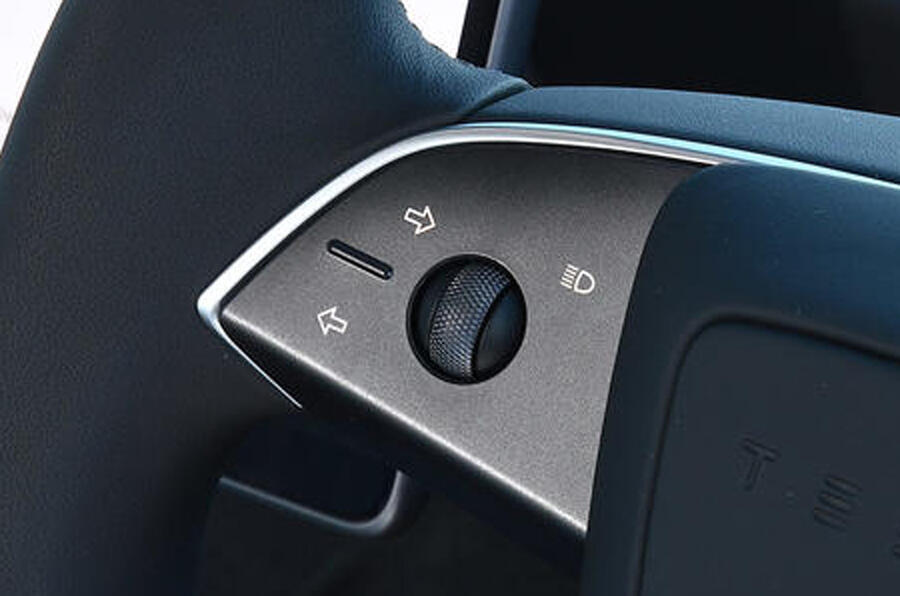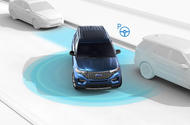Ford claims it will save around $10 million per year by removing the Puma’s Active Park Assist
After Tesla ditched indicator stalks, Ford has now removed its automated parking tech – saving millions of pounds
The updated Ford Puma lacks many of the dashboard buttons fitted to the outgoing model, most of which have migrated to the much larger screen. But one has disappeared altogether: Active Park Assist.
This was the automated parking function that used the car’s ultrasonic sensors to measure gaps between parallel parked vehicles big enough to automatically slot in the Puma (or Ford Fiesta or Ford Focus etc).
Park assist was a foretaste of the future. The car completely took over the driving function to park autonomously. The trouble was, it was little used by owners.
Ford discovered this during a sweep of its connected car data and took a decision that it says will have an impact across its model range. “Very, very few people are using it. So we can remove that feature,” said Kumar Galhotra, Ford chief operating officer, on the company’s recent earnings call.
The motivation is to save money. The feature costs Ford around $60 (£47) per vehicle, Galhotra said. Cancelling it will save Ford around $10 million per year.
In the battle to drive down rising costs, Ford is of many car makers casting around for features that can be deleted without customers caring too much. When it comes to scrutinising the final bill of materials, particularly for electric cars, the Blue Oval is open about taking much of its lead from the master cost-slasher: Tesla.
Making life easier for Tesla and other car makers is that they can now interrogate their fleet remotely thanks to the onboard modem. Tesla last year revealed that its data crunching of features showed that few owners were using the opening sunroof, leading it to quickly delete the feature on upcoming models.
As Tesla owners will know, the US company is ruthless when it comes to cutting what it considers to be expendable features. The new Highland update of the Tesla Model 3 saloon Tesla deleted fog lamps (claiming the standard headlights were now bright enough) and swapped indicator stalks for steering wheel buttons.

Tesla was the first to begin removing features while looking to save costs, such as the indicator stalks
Lumbar support for the passenger seat disappeared in 2021. “Logs showed almost no usage. Not worth cost/mass for everyone when almost never used,” CEO Elon Musk posted on X, then Twitter.
Gone too are ultrasonic parking sensors as well as rain sensors, both of which are replaced by Tesla’s ever-more hard-working cameras, dubbed Tesla Vision. Feedback from customers on the efficacy of the replacements has been poor.
However, as a result of this approach, the company said last year it had taken 30% of the cost out of building the Model 3 since launching it in 2018, some of which goes into model price cuts.
Anyone ordering cars in the dark days of Covid and its aftermath will remember that carmakers were having to delete features purely due to the lack of semiconductors available to control them. These days however, the motivation is almost 100% cost-saving.
Migrating buttons to the touchscreen to save on materials and assembly costs is almost a given on any model update no matter which car maker, even on upscale models such as Range Rovers. The latest versions for example lose controls for the heating and ventilation to the screen.
JLR alluded to this in its most recent annual report, saying it had driven “material cost reduction” through “technical and feature optimisation”.
Other feature deletions are more minor, for example lights for the passenger sunshade vanity mirror, or the rear wiper. This penny pinching is mostly seen in mainstream, cost-sensitive cars where margins are slimmest.
The loss of physical controls is felt very differently by customers across the world. “It depends on the region,” said VW’s head of development Kai Grunitz. “In China, they want to do everything, and I really mean everything with the speech dialogue system [voice control]. But in the States, they want to have huge switches.”
China might love voice control and screens but carmakers dialling back some of the excessive early spend on the semi-autonomous ambitions. Makers there such as Xpeng are waving goodbye to lidar, the expensive sensors that many consider essential for hands-off, eyes-off autonomy.
Volkswagen learned the hard way that you can jump too soon to a screen-based ecosystem, and is repairing some of the damage with its new MIB4 infotainment system that now gives you fixed digital buttons on the extremities of the screen.
The advantage of course of a software-based control system is that you can add new features, update the ones you have and generally improve the useability throughout the life of the car. For example In Ford’s case, anyone who really loved Park Assist might in the future be able to pay to download it from the digital store.
This new ‘software-defined’ car is the holy grail of car makers who believe they can persuade drivers to subscribe to new features and so help pay for what’s an incredibly expensive shift from the current electronic architectures.
What these valuable features will be are still being thrashed out. BMW felt the sting of customer criticism recently after wanting to activate physical features such as heated seats via digital subscription. That backlash has cautioned others. “If I walk into the dealership and I buy a car with a heated seat, I expect it to work not be offered as a service,” Mamatha Chamarthi, head of business growth for software Stellantis, told a recent panel on the software-defined car hosted by the Financial Times. “I think that business model will get a lot of pushback from the customer, as we have seen in the case of BMW”
Stellantis, parent brand of car makers such as Vauxhall and Peugeot, is investigating selling more horsepower for future electric Dodge performance cars for track scenarios, or in-car off-road tutorials to Jeep owners, Chamarthi said.
The wider point is that these features can be developed in a much faster timeframe than the car itself and therefore better react to customer needs.
“In the past I would write 1000 pages of specification five years before and hope that by the time the car launched, this is exactly the stuff that the customer will need,” George Massing, head of Mercedes-Benz’s MBOS operating system, told the same FT panel.
Even Tesla has discovered there’s a limit to feature deletion or omission when you’re trying to woo customers. For example the Highland Model 3 update now includes ambient lighting for the first time, as well as a wireless phone charger and an acoustic glass screen. The Ford Puma might no longer offer Active Park Assist but in its place is a new 360 degree camera display, making parking yourself easier.
However Tesla still doesn’t provide a head-up display or a heated steering wheel. And as was common in the car industry in its early days, if you don’t offer a feature, the aftermarket will be happy to step in. Tesla in particular has become a target for creative aftermarket companies such as Enhance Auto, which has won fans for its S3XY Knob. This adds a physical dial to the centre console that can be customised to control functions such as cabin heating and battery preconditioning.
Carmakers however can see the immediate benefit of a streamlined and digital feature offering in their manufacturing efficiency. The fewer variations on the production line, the more cars they can build with fewer people. Any weapon that can be activated in the battle to reduce the cost of EVs, will be.

